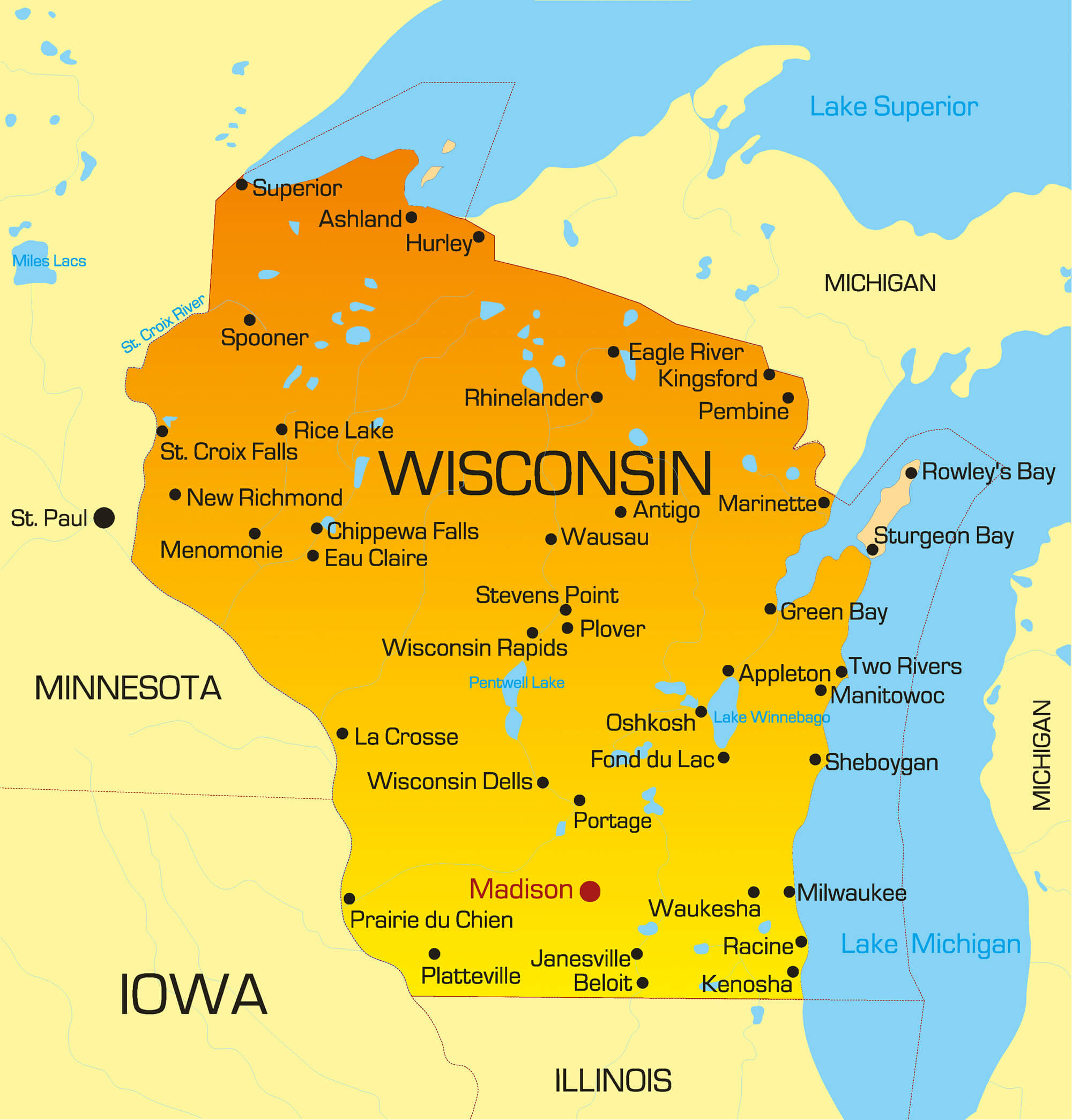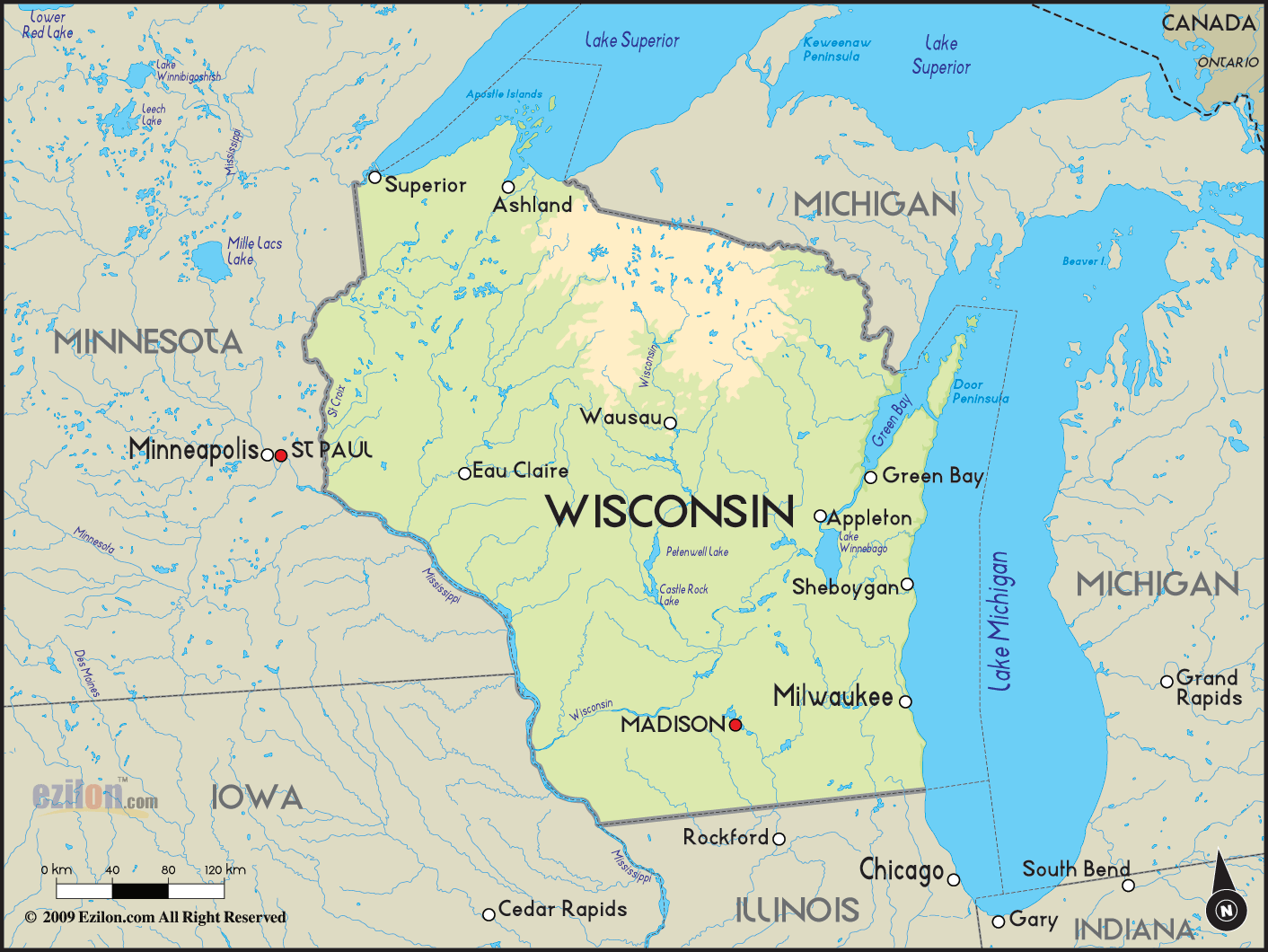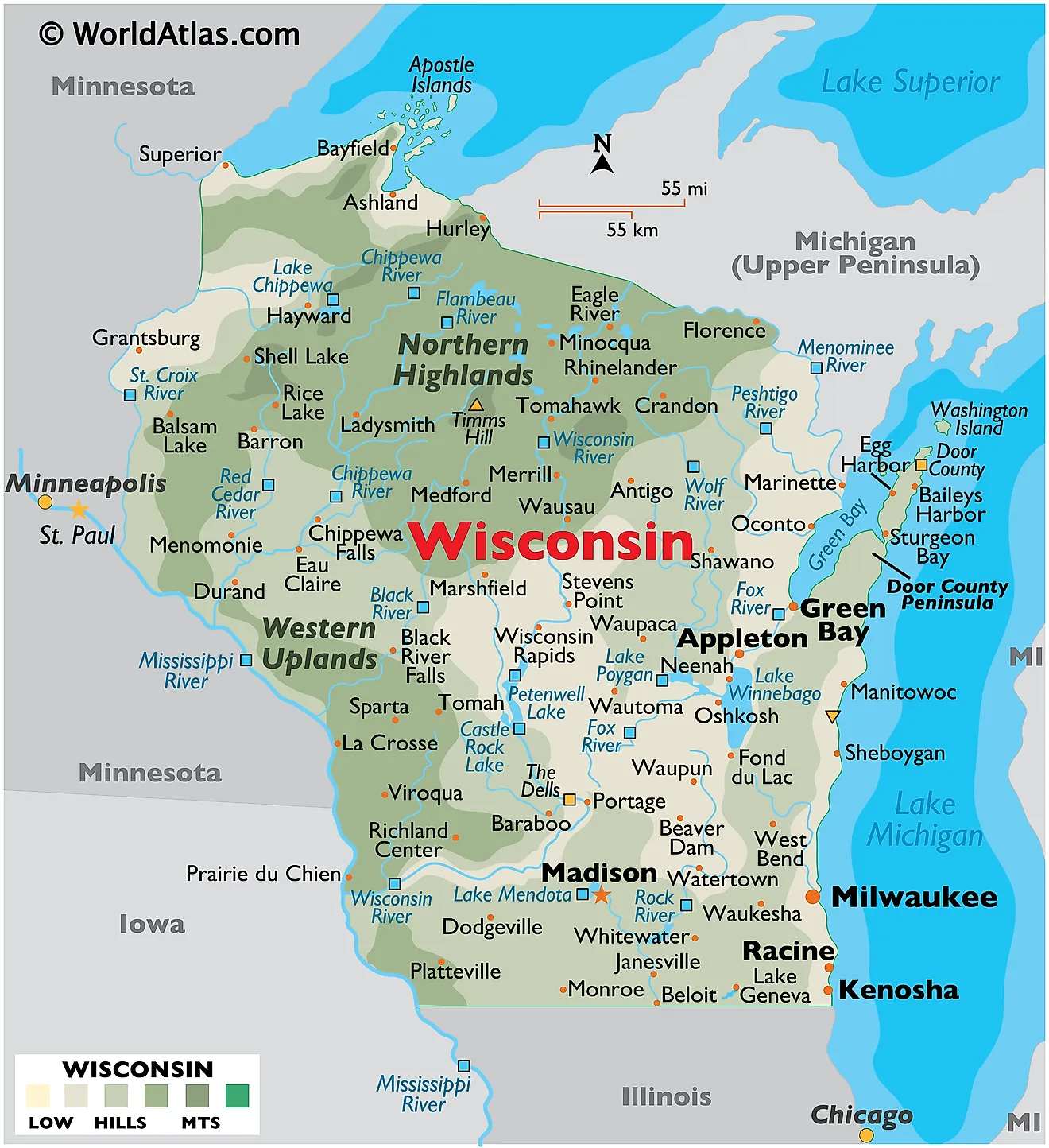Wisconsin Teachers Resign - A Look At The Badger State
There's been some talk, you know, about shifts happening in the educational landscape, particularly concerning Wisconsin teachers resign from their positions. It's a topic that, in a way, makes you think about the very fabric of a place, how its unique characteristics might play a part in these broader movements. When we consider a state like Wisconsin, a place with its own distinct feel and history, it really does make you wonder about the everyday experiences of people who live and work there, especially those dedicating themselves to teaching young minds.
This whole situation, it kind of prompts us to look a little closer at Wisconsin itself. What is this state all about? Where is it situated? What are its defining features? Understanding the backdrop, the very geography and spirit of a place, can sometimes give us a different lens through which to view changes in its communities, including, perhaps, why some dedicated educators might choose to move on. It’s not about finding simple answers, but rather, you know, seeing the bigger picture of a place and its people.
So, as we explore some facts about this particular part of the country, we might just gain a slightly better sense of the environment where these changes are taking place. We'll touch on its natural boundaries, its welcoming spirit for visitors, and even its historical roots. It’s a way of, perhaps, getting a feel for the kind of setting where the topic of Wisconsin teachers resign comes up, giving us a broader sense of the state’s character and what it means to be there.
Table of Contents
- What Makes Wisconsin, Well, Wisconsin?
- The Lay of the Land in Wisconsin
- A Peek into Wisconsin's History
- What's There to Explore in Wisconsin?
- Finding Your Path Through Wisconsin's Scenery
- How Do People Get Things Done in Wisconsin?
- Connecting with Wisconsin's Support Systems
- Who Are the People of Wisconsin?
- Wisconsin Teachers Resign - A Look at the State's Population Centers
What Makes Wisconsin, Well, Wisconsin?
When you think about Wisconsin, what really comes to mind? Is it the deep green of its forests, the shimmer of its many lakes, or maybe the feeling of a place that’s, you know, just a little bit different? It’s a state that really does have a distinct identity, shaped by its physical surroundings and its place in the larger scheme of things. You could say, in a way, that the very nature of its borders and its location in the country helps to define the kind of experiences folks have living there, which could certainly include those who are working in education.
It’s kind of interesting to consider how a state’s physical layout might, perhaps, subtly influence the flow of life within it. We're talking about a place that's part of the upper midwest region of the United States, which, you know, has its own particular vibe. This region is known for certain kinds of weather patterns, certain types of landscapes, and even, arguably, a particular way of life. All of this forms the backdrop for communities, for schools, and for the people who make up the workforce, including, of course, the dedicated teachers.
The Lay of the Land in Wisconsin
So, to get a better sense of where Wisconsin sits, it’s really quite bordered by other places, you know, giving it a pretty clear outline on the map. To its western side, it shares a long edge with Minnesota, which is, like, a neighboring state with its own character. Then, as you move southwest, you find Iowa, another farming state, really, that touches Wisconsin’s boundaries. And directly to the south, there's Illinois, a state that's home to some very large cities and a lot of activity. These shared lines, they kind of suggest a constant interaction, a flow of people and ideas, across these state edges.
Up north, Wisconsin has this really special connection with Lake Superior, one of the truly massive Great Lakes, and also the upper peninsula of Michigan. This northern border, it’s not just a line on a map; it’s a vast expanse of water and rugged land, shaping the climate and the culture of that part of the state. It’s a place where, you know, the wildness of nature is very present, and that sort of environment can create a certain kind of resilience, or perhaps, a desire for change. The physical map of Wisconsin itself shows all these major cities, the different kinds of terrain, like rolling hills or flat plains, and those national parks, the rivers that crisscross the land, and even, you know, those surrounding countries with their international borders and outline maps. It really does paint a picture of a diverse and, in some ways, quite varied landscape, which, basically, impacts how communities are built and how life unfolds, including for those working in public service.
A Peek into Wisconsin's History
Every place has a story, a moment when it truly became what it is, and Wisconsin is no different. It’s not just a collection of cities and natural features; it has a past, a journey that led it to become a part of the larger American family. This historical foundation, it really does give a sense of permanence, of something established over time. But even established things, they can see periods of adjustment, times when, perhaps, people feel the need for something new, or when circumstances lead to shifts in long-standing patterns. The very history of a place, you know, can sometimes hint at its capacity for change, or for facing new challenges.
Thinking about the timeline, it helps to ground us in the state's long existence. It's a constituent state of the U.S., which means it's a fundamental piece of the country's makeup. This status, it carries a lot of weight, a sense of shared responsibility and participation in the national story. And, as a matter of fact, knowing its origins helps us appreciate its current state. The past, in a way, informs the present, and can even, perhaps, suggest the direction of future developments within its communities.
When Did Wisconsin Become a Part of the Family?
Wisconsin officially joined the Union as the 30th state in 1848. That year, it was admitted, marking a really important step in its development. This moment, you know, it wasn't just a date on a calendar; it was the formal recognition of Wisconsin as a fully fledged member of the United States. It meant a new chapter began, with new responsibilities and opportunities for its people. This historical turning point, it sort of set the stage for everything that followed, from the growth of its cities to the establishment of its public services, like its school systems. The fact that it has such a long history as a state, it means there's a deep-rooted tradition, but also, perhaps, a long history of adapting to new circumstances, something that might be relevant when we think about things like Wisconsin teachers resign from their roles.
What's There to Explore in Wisconsin?
If you're thinking about visiting Wisconsin, or just wondering what the state has to offer, there's actually quite a bit to see and do. It's a place that really does seem to invite people to come and experience its different sides. From its vast stretches of water to its diverse land formations, there's a lot that makes Wisconsin a spot for, you know, a change of scenery or a bit of adventure. This welcoming aspect, this focus on exploration and new experiences, it’s a big part of the state’s overall character, and that kind of openness can, arguably, extend to how it handles its internal dynamics, including shifts in its professional sectors.
The idea of a "getaway" or a "vacation" often suggests a break, a chance to step away from the usual routine. And in Wisconsin, it seems there are plenty of resources for just that. The official website for the Wisconsin Department of Tourism is a place where you can, you know, find all sorts of information. It’s set up to help people plan their next trip, whether it’s for a quiet weekend or a longer adventure. This emphasis on tourism, it highlights the state's natural appeal and its efforts to welcome outsiders, which, in a way, speaks to its ability to adapt and present itself to a wider audience.
Finding Your Path Through Wisconsin's Scenery
Travel Wisconsin, for example, has all the resources you need to plan your next vacation or getaway. This means there's a lot of focus on showing off the state's natural beauty and recreational opportunities. You can find information about all those major cities, the different kinds of terrain you might encounter, from gentle hills to more rugged areas, and, you know, those peaceful national parks. The rivers that flow through the state, they also offer a lot for those who enjoy the outdoors. This detailed picture of the state's physical attributes, it really does give you a sense of its richness and variety, which, in some respects, can be seen as a strength, but also, perhaps, as a complex environment where different challenges might arise for those working in its communities.
A physical map of Wisconsin shows you all these things, the major cities where people gather, the varied terrain that makes up the landscape, and those important natural spaces like national parks and winding rivers. It even shows the surrounding countries with their international borders and outline maps, giving you a full picture of where Wisconsin sits in the larger world. This kind of detailed look at the state's physical makeup, it really does highlight its unique features, and how, you know, its natural setting can shape the lives and experiences of everyone who calls it home, including, naturally, the dedicated teachers in its schools.
How Do People Get Things Done in Wisconsin?
In any state, there are ways that people connect with services, with information, and with the various parts of their government. Wisconsin is no different, and it seems they’ve really put some thought into making things accessible. This focus on providing clear pathways for citizens to get what they need, it really does speak to a certain kind of organization and a desire to support the people who live there. When we think about how things operate, how easy or difficult it is to get information or help, it can, you know, definitely play a part in the overall feeling of a community, and how individuals experience their working lives within it.
Whether you're looking for state agencies, or online services, or even Wisconsin apps, it seems there are options available. This suggests a modern approach to governance, an effort to meet people where they are, often through digital means. It’s about making things straightforward, more efficient, and, arguably, more responsive to the needs of the population. This kind of infrastructure, this system of support, is pretty important for everyone, including those who are part of the public sector, like the teaching staff in schools across the state. It's about, basically, how the state functions to serve its people.
Connecting with Wisconsin's Support Systems
The availability of state agencies, online services, and even Wisconsin apps really does show a commitment to providing resources for its residents. This network of support, it's pretty important for the day-to-day workings of life in the state. For example, if you need to find specific information or access certain government functions, these tools are there to help. This infrastructure, this way of organizing public access, it can influence how people feel about their connection to the state, and, perhaps, how they feel supported in their professional roles. It’s a part of the broader environment that, you know, shapes experiences for everyone, including, potentially, those Wisconsin teachers resign from their positions, as they might be looking for or interacting with such systems.
Who Are the People of Wisconsin?
A state is, at its heart, made up of its people. Their stories, their daily lives, and where they choose to live, all contribute to the character of the place. Wisconsin has its own distinct population centers, places where many folks gather to live, work, and build communities. Understanding these hubs, and the general makeup of the people who call Wisconsin home, it really does give us a better picture of the human element behind any broader trends or changes happening in the state. It's about, you know, the real individuals and families who make up the fabric of Wisconsin life.
The capital city, Madison, is a key point, a place where a lot of the state's official business happens, and it’s a center for education and culture. Then there's Milwaukee, which is, basically, the biggest city in Wisconsin, a really bustling place with a lot of history and industry. These major population areas, they're like the beating heart of the state, where many different lives intersect. The sheer number of people in these places, and the different backgrounds they bring, contributes to a very dynamic environment, one where, you know, things are always moving and changing, including, perhaps, the flow of people in and out of certain professions.
Wisconsin Teachers Resign - A Look at the State's Population Centers
Madison, as the capital of Wisconsin, plays a really central role in the state's identity. It's a place where decisions are made, and where many public institutions, including educational ones, have a strong presence. Then there's Milwaukee, the biggest city in Wisconsin, which is a major hub of activity, industry, and diverse communities. These cities, they're where a lot of the state's energy is concentrated, and where, arguably, many of the challenges and opportunities for professions like teaching would be most visible. The dynamics of these urban centers, they really do impact the broader state, and, you know, can certainly play a part in how people feel about their work and their future.
In 2018, most of Wisconsin’s immigrants settled there, which is a really interesting detail about the state's population. This influx of new residents, people coming from different places, it adds another layer to the state's social fabric. It suggests a place that is, in a way, constantly evolving, with new perspectives and experiences being brought in. This kind of demographic shift, it can influence communities in many ways, from the diversity of the student body in schools to the changing needs of the workforce. It’s a subtle but important aspect of Wisconsin's ongoing story, and, you know, it’s part of the wider context when we consider any changes happening within its professional communities, like, say, if Wisconsin teachers resign from their roles, as the population itself is always in flux.
Thinking About the Shifting Sands in Wisconsin
When we look at Wisconsin, with its distinct borders, its rich history, its natural beauty, and its busy cities, it’s clear that it’s a place with a lot of character. It’s a state that has seen many changes over time, from its admission into the Union to the constant flow of people moving in and

Wisconsin Map - Guide of the World

Geographical Map of Wisconsin and Wisconsin Geographical Maps

Wisconsin Maps & Facts - World Atlas